Many concepts that not long ago seemed like pure science fiction are now our every day reality. Like the Jetsons, we make video calls and use robot vacuum cleaners, while 3D printers are already capable of printing food – straight out of that famous cartoon.
The same goes for autonomous delivery robots. We don’t fly around in personal spacecrafts as sci-fi once predicted, but autonomous vehicles are quickly becoming the norm. Especially in the US and China, no one is surprised to see starship robots rolling down the street or Serve Robotics robots navigating sidewalks.
It’s only a matter of time before we start using them at scale for robot delivery. Yet autonomous vehicles are just one of many solutions that foodtech companies can embrace to meet the growing demand for delivery services.
In this article, we explore the different autonomous food delivery technologies shaping what the near future of the industry might look like.
Quick commerce took off during the pandemic – and it hasn’t slowed down
Quick commerce had its big boom during the pandemic, when ordering from your phone became a lifeline rather than a luxury. Since then, it has grown steadily, becoming deeply woven into how millions of people eat and shop.
It took just a few years for the intersection of quick commerce and foodtech to go from niche curiosity to everyday habit. Today, it’s almost impossible to find someone who has never opened Uber Eats, Bolt Food, Glovo, or a similar app to get a meal delivered.
Ordering restaurant meals through an app has become the new normal. Grocery shopping via app is no longer unusual either – it’s a routine for busy professionals, parents, and even students.
The biggest players in food tech have noticed this shift and are racing to turn their platforms into super apps. These aren’t just for ordering food anymore, but for ratings, live tracking, shopping, reservations, and other lifestyle features.
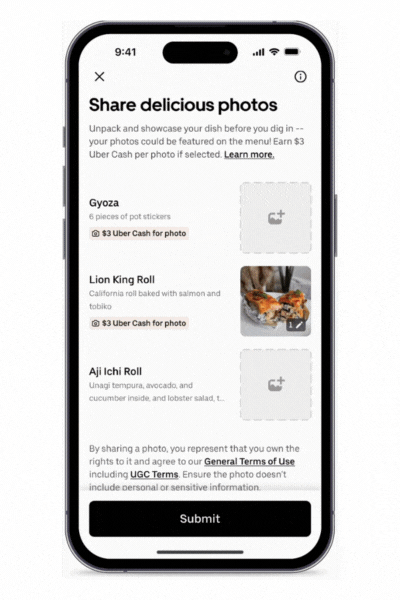
Yet beneath this surface-level innovation lies a problem that could threaten the industry’s growth. And it has nothing to do with technology or consumer interest.
What’s the biggest threat to food delivery growth right now?
The real obstacle is courier shortages. It’s becoming more visible with each passing month, and not just to industry insiders – customers are starting to feel it too.
Scroll through Reddit threads about food delivery apps, and you’ll see post after post from frustrated users sharing the same screenshot: “No couriers nearby.” For many, this is no longer a rare inconvenience but a regular occurrence.
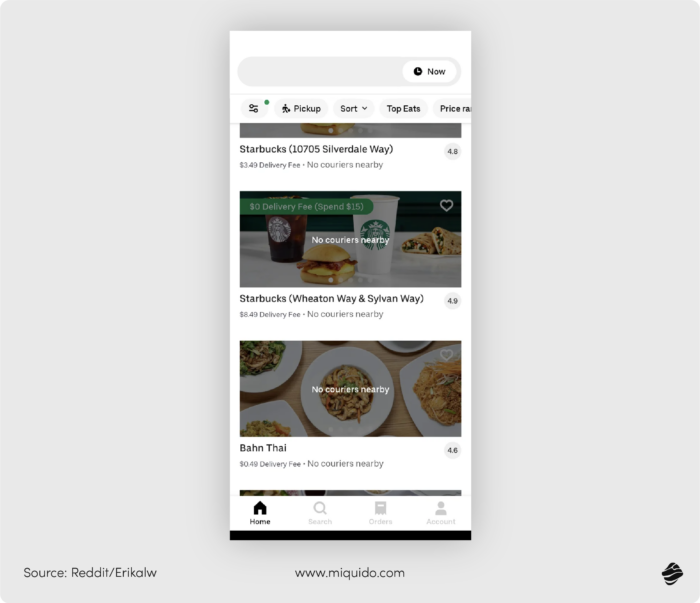
The reasons are complex but interconnected. Delivery platforms often fail to guarantee stable working conditions for couriers, and many penalize drivers for rejecting jobs with low pay or long distances through acceptance rate penalties. This puts couriers in a difficult position: take unprofitable jobs or risk losing access to the platform entirely.
The algorithms aren’t helping either. Drivers often turn down orders that simply don’t make financial sense, but doing so repeatedly can lead to sanctions. This creates a paradox where couriers either work for less than they believe is fair or risk losing work altogether.
When you add declining base pay from giants like Uber Eats, lower tips, and the rising cost of living, the churn rate among couriers becomes inevitable. The result is fewer available drivers – and more frustrated customers.
Could autonomous delivery robots fill the gap?
There are two potential paths forward for the industry. One is to redesign courier conditions so that the job is sustainable, fair, and appealing again – something new, ethical, and sustainability-focused entrants could use as a competitive advantage to attract both drivers and loyal customers.
The other is to accelerate the adoption of robotic delivery. This is where autonomous delivery robots and food delivery robots enter the picture, moving from pilot projects into mainstream operations. In a perfect scenario, we see both solutions coming together – autonomous delivery robots complimenting the new, more courier-friendly model of navigating deliveries.
Cities around the world are already experimenting with fleets of compact, electric robots that deliver food without a human courier. Electric and equipped with ultrasonic sensors, they can operate around the clock, and represent a sustainable delivery solution that could significantly lower operational costs.
For urban areas where congestion, courier turnover, and delivery times are constant challenges, autonomous delivery could be more than just a novelty – it could be the backbone of quick commerce in the near future.
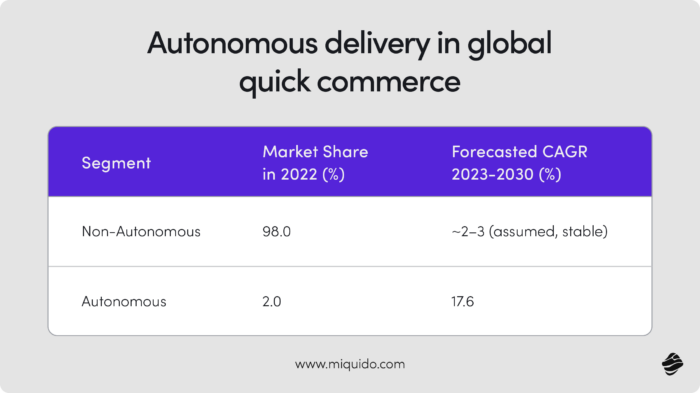
Will food delivery robots become the new normal?
The future of quick commerce won’t just depend on consumer demand – that part is already proven. It will hinge on solving the operational bottleneck that courier shortages have created.
Whether that means offering more competitive conditions to human couriers or integrating food delivery robots into everyday service, the next chapter of foodtech will look very different from today’s. The only question is which path companies will choose to take first.
Is autonomous delivery the future of foodtech? Considering the current challenges the industry is facing, we may soon see the rapid adoption of autonomous solutions on a large scale.
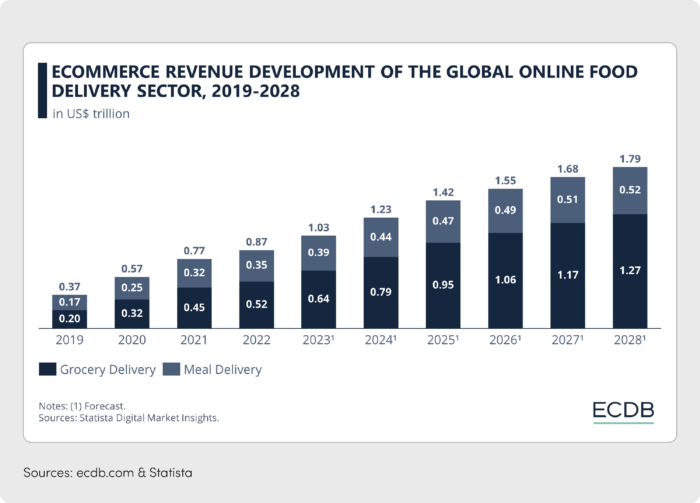
Campus delivery bots
College campuses offer ideal controlled traffic environments for testing autonomous delivery robots. Their pedestrian-friendly layouts, with clearly defined paths, quieter roads, and minimal interference from motor vehicles, make it easier for robots equipped with advanced sensors (like LiDAR, radar, and computer vision) to navigate reliably and safely. This controlled setting reduces the complexity of the last mile delivery challenge and accelerates the refinement of their delivery process.
Moreover, there’s a huge demand for food delivery on campuses: students are busy, time-poor, often lacking kitchen facilities, and frequently choose outdoor or communal spaces for their meals. Since many meals are consumed outside, on lawns, courtyards, or benches, robots don’t need to enter buildings, use elevators, or climb stairs, simplifying the package delivery and delivery process significantly.
As Grubhub highlights, Gen Z, currently the majority on campuses, is a technologically savvy, impatient generation that rapidly embraces innovations. This demographic’s receptivity creates fertile ground for broad adoption of robot delivery systems.
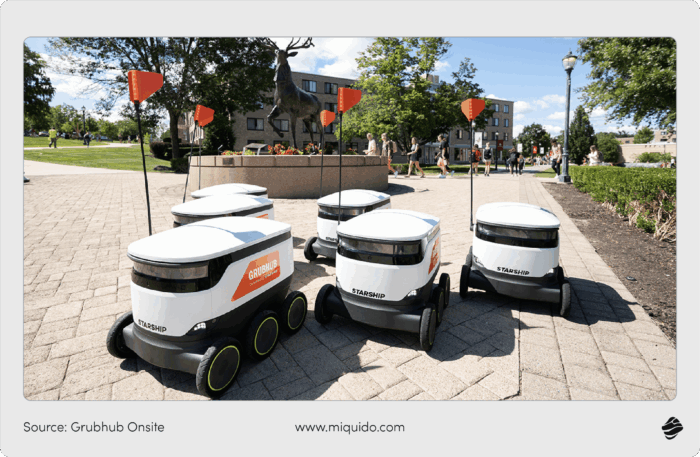
In the U.S., small robots from Starship Technologies are already active on dozens of campuses. For example, Towson University has rolled out Starship’s fleet, delivering from multiple eateries using secure, temperature-controlled compartments and advanced sensors to navigate sidewalks and crosswalks
Additionally, Starship is expanding to new campuses including Georgia Tech, Southeast Missouri State University, and Cal Poly, and deploying features like wireless charging and Starship Marketplace to enhance the last mile delivery experience
In Europe, while adoption has been slower, momentum is building. At the European University in Villaviciosa de Odón (Spain), Ottobots, developed by Ottonomy, are delivering food and drinks outdoors across campus recreational zones with full autonomy, enabling quick service (~15 minutes) via a Sodexo-partnered delivery process.
Urban drone drop
Although autonomous delivery is most often associated with ground vehicles, drones are poised to cause even bigger disruptions in the restaurant industry and beyond. Their widespread adoption initially started in personal use, from hobby flying, photography, to small-scale parcel drops, but today drones are permanently embedded in multiple sectors, especially logistics.
Inside large warehouses, drones are used to distribute and identify parcels, monitor inventory, and support AI in quality control. In logistics, foodtech and manufacturing, they can detect misplaced goods on shelves or identify expired products, allowing companies to take appropriate action before issues escalate.
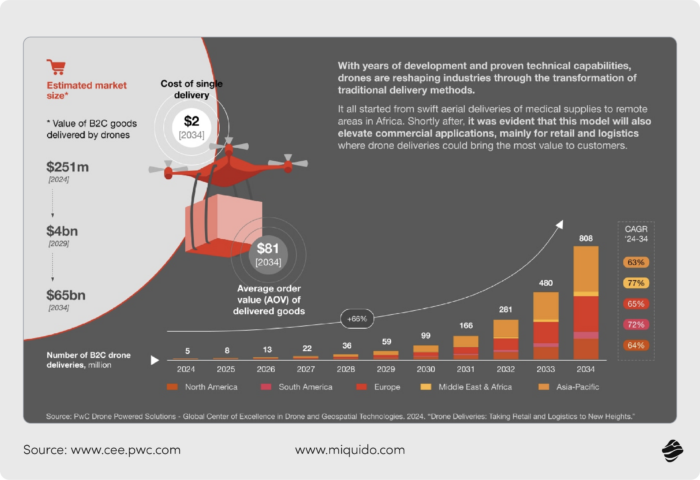
What makes drones perfect for autonomous food delivery?
Soon, drones may become a standard part of the delivery process. They are uniquely suited for reaching remote locations where conventional delivery vehicles struggle due to roadblocks, terrain, or poor infrastructure. In urban areas, drones bypass traffic congestion, ensuring faster deliveries—a key competitive advantage in an era when speed of service directly influences customer loyalty and reduces churn.
One example comes from DoorDash, which has partnered with Wing to bring drone-based meal delivery to select U.S. markets. Customers in Christiansburg, VA, and Frisco, TX, can order food from local restaurants via drones, provided their address falls within a designated delivery zone. Although for now it is rather exception to the rule, it highlights how company plans for drones are moving from pilot programs into real-world, scalable services.
This type of innovation isn’t limited to food. Nike recently showcased the marketing potential of drones by dropping free Air Max sneakers directly to fans in pedestrian areas, a striking example of how creative company plans can merge technology, commerce, and culture.
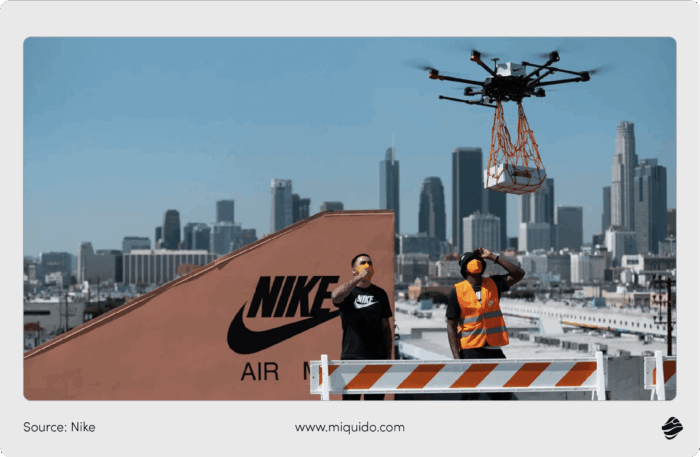
Of course, widespread deployment will also require solving challenges: ensuring safety in shared skies, mitigating risks in crowded pedestrian areas, and adapting routes to changing weather conditions. But as adoption grows, drones are set to become a core element of the future last mile delivery ecosystem.
Drive-thru robot arms
Quick-service restaurants are often eager to absorb innovation. Recently, much buzz surrounded the GenAI-powered automated Drive Thru systems at Burger King and Wendy’s. Memes followed, but trailblazing is never easy. One thing is certain: robotization and the fast food industry are moving hand in hand.

Robot arms are already commonplace in Amazon’s fulfillment centers, where they handle millions of packages daily, and the food industry has adopted them in manufacturing as well as for automated fry stations. Bringing similar robotics into the Drive Thru context could mark a major step forward, helping brands overcome one of the industry’s biggest struggles: staffing shortages at customer-facing positions.
From a technical standpoint, these systems could rely on cameras combined with machine vision to accurately detect vehicle placement, cup sizes, or food trays, while robotic grippers execute movements that are both efficient and reliable. Integrated with payment and order management systems, such robot arms could streamline the entire process, ensuring speed and consistency without compromising service quality.
Will the drive thrus and frying stations at the food chains be soon operated by the autonomous systems? Much likely, as soon as the trailblazer companies notice significant efficiency increases, setting new standard in customer assistance.
Autonomous delivery vehicles
Autonomous delivery vehicles may still feel like a futuristic solution in Europe, but in the U.S. and China they are already being deployed at scale. This isn’t surprising, since delivery drivers are in short supply as demand skyrockets and e-commerce giants expand beyond the largest metropolitan areas.
Take Amazon Scout, which has already been tested in select neighborhoods in California, Georgia, and Tennessee, or FedEx’s autonomous vehicle program, which began in Dallas and Houston and has now expanded to several Chinese cities. These pilots illustrate how quickly large-scale logistics providers are moving forward.
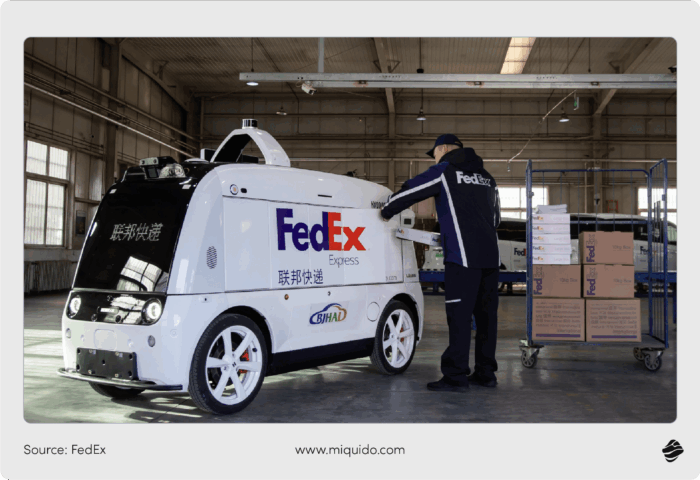
Could autonomous delivery robots make a difference and improve the working conditions?
To stay competitive, global players often impose delivery performance standards that are nearly impossible for human couriers to meet consistently. These increasingly common practices have been raising controversies in the recent years. In the perfect scenario, AVs could put an end to these challenges, raising margins while allowing companies to lower the demands placed on human couriers, still preferred by some customers. A similar trend can already be observed in supermarkets worldwide.
In regions increasingly affected by the climate crisis, autonomous delivery vehicles bring another critical advantage. When temperatures soar to dangerous levels, the demand for deliveries rises, but couriers face serious health risks. With food delivery robots, groceries and meals can reach the most vulnerable communities—such as elderly or disabled people—without putting human workers in harm’s way.
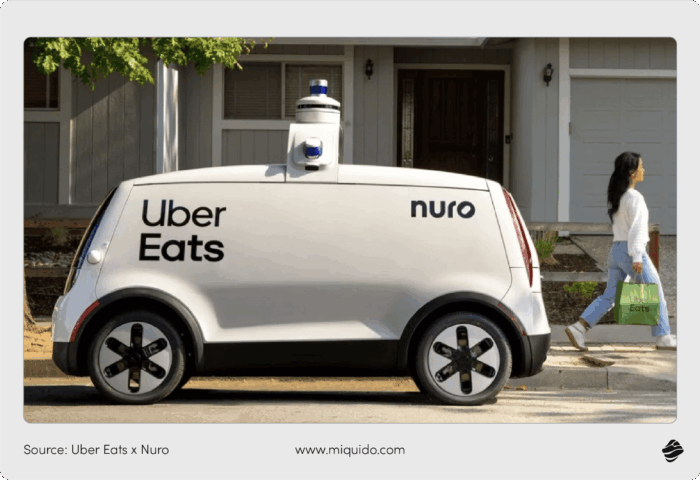
Still, deploying autonomous vehicles is no small challenge. Uber knows this well: after massive investments, the company abandoned its internal AV development program. Yet Uber has returned to the space, this time with partners like Nuro and Lucid. In 2022, Uber signed a ten-year deal with Nuro, putting autonomous food delivery vehicles on the streets of Silicon Valley.
Safety remains the central concern. Launching AVs requires regional authorities to issue licenses, and strict regulatory frameworks must be followed. Here, food delivery robots could serve as valuable trailblazers: since they operate at lower speeds than robotaxis, they provide an opportunity to fine-tune the technology before it is introduced onto high-speed roads.
Automated parcel lockers
Parcel lockers are not a new invention; the first systems appeared in Germany at the beginning of the 21st century. Yet it was the Polish company InPost that scaled the concept widely, creating a benchmark for other businesses that had traditionally focused on courier-based delivery.
Today, parcel lockers are an integral part of the urban and suburban landscape in many countries, from Poland and Sweden to the UK. They are still most commonly associated with retail and e-commerce, but their potential goes far beyond that.
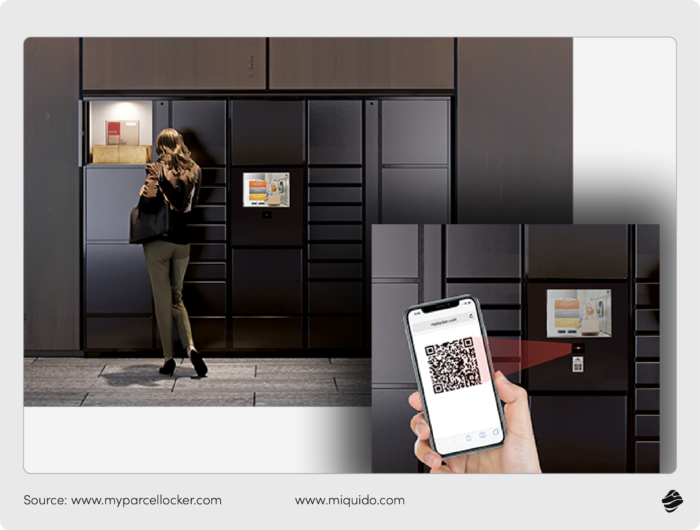
Increasingly, parcel lockers are being recognized as a valuable complement to food delivery. More companies are experimenting with lockers specifically designed for groceries and prepared meals, equipped with cooling or heating features to ensure freshness and safety.
It’s very likely that in the near future we’ll see parcel locker integration directly within the most popular foodtech apps, offering customers a flexible alternative to traditional home delivery.
Preparing the ground for innovation in foodtech
Autonomous deliveries could radically transform the food delivery and foodtech industry, and all signs indicate that this change will come sooner rather than later. Very soon, the question will not be whether to adopt these technologies, but how to integrate them to achieve the best results.
By combining our expertise in foodtech and logistics, we can help you drive innovation forward at high speed. And with AI involved, the cost can be significantly lower than with traditional software development—our AI Kickstarter framework, for example, reduces expenses by an average of 60%

![[header] top 5 use cases for autonomous delivery in foodtech today](https://www.miquido.com/wp-content/uploads/2025/08/header-top-5-use-cases-for-autonomous-delivery-in-foodtech-today.jpg)
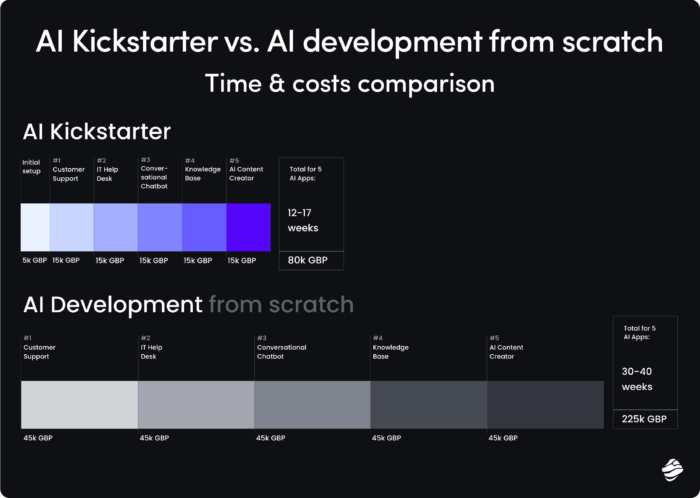


![[header] top generative ai companies in 2025 min](https://www.miquido.com/wp-content/uploads/2025/09/header-top-generative-ai-companies-in-2025-min-432x288.jpg)
![[header] mobile app ui design tips for multiplying sales optimize your mobile commerce app](https://www.miquido.com/wp-content/uploads/2025/09/header-mobile-app-ui-design-tips-for-multiplying-sales_-optimize-your-mobile-commerce-app-432x288.jpg)
![[header] top ai use cases in ecommerce b2b from manufacturing to foodtech](https://www.miquido.com/wp-content/uploads/2025/09/header-top-ai-use-cases-in-ecommerce-b2b_-from-manufacturing-to-foodtech-432x288.jpg)